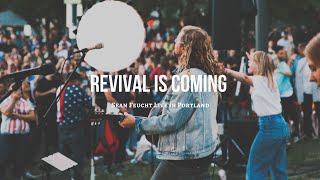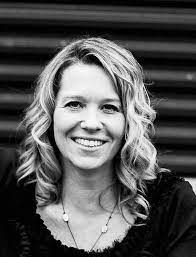By Roger Barbee
The hand-mixed concrete sidewalk at the front of our past Edinburg house leads to a gently sloped bank that ends at the road. At the top of the bank is a row of large boxwoods. One does not need to be an archeologist to surmise that at one time the sidewalk met the old road, which was of gravel, and the boxwoods were a border between it and the front yard. But in the 1950’s the gravel road was modernized at the request of its property owners and asphalt replaced the gravel; however, some owners were not fully aware of what modernization was bringing, according to my friend Gordon.
Mr. Wolf, who farmed at the end of the country road next to the North Fork, had the habit, according to his daughters, of stepping on his “lucky rock” each time he would walk to town. His “rock” was a piece of limestone that protruded above the gravel where the country road met Route 11. When the state paved the road, his lucky rock was scrapped away, and the bed of the road no longer followed the contours of the land. Small rises were cut out and dips were filled in to make the road more level. So, the bank in front of our house was cut lower, causing the sidewalk to lead to a small cliff, and other modern engineered changes to the land altered the contour of Old Bethel Road. What had been a sort of safe, old path for feet, hooves, wheels, and the occasional tire was now a road of modern means.
Wendell Berry describes a path as “…little more than a habit that comes with knowledge of a place. It is a sort of ritual of familiarity. As a form, it is a form of contact with a known landscape. It is not destructive. It is the perfect adaptation, through experience and familiarity, of movement to place; it obeys the natural contours; such obstacles as it meets it goes around.” The new road does not follow the landscape, but altered it. The new road, which allows much higher speed than the old one, so people may not see the landscape. The new road covered Mr. Wolf’s lucky rock and other familiar objects created from experience. However, many people will see the paved road as cleaner, safer, and easier to maintain. Those are good reasons to pave a gravel road, but I want to see the old and new road as a metaphor for our present culture.
Recently I read an interview with a cancer survivor who decided to create a new line sympathy cards. Emily McDowell wanted to create cards for people who “did not know what to say” to a friend who was recovering from a serious illness such as cancer or just going through one of life’s tough times. She received good feedback concerning her honest cards, and she soon teamed with Kelsey Crowe, an empathy scholar who founded an organization called Help Each Other Out where she teaches people how to empathize in times of illness or difficult times. My question: Have we become, as a culture, so void of valid emotions that we need a book to guide us on how to feel for each other and how to express that feeling?
I argue that we need more paths in our lives. It seems to me that we have literally and figuratively built so many roads in our lives that we do longer see the landscape and have lost familiarity with its intricate features, such as a projecting piece of limestone that becomes a “lucky stone.” We move so quickly and are so busy that we have forgotten how to express sincere empathy for our fellow humans. We have such a need for so called success that we pack the lives of our children with too many activities thinking that more is better, but they may not see the landscape of their childhoods. We even pave our walking trials as if packed dirt is to be avoided at all costs.
Of course roads fill a need in our modern world, but can we not create literal and figurative paths in our lives that show us our landscapes while offering us a chance to become familiar with our physical surroundings and neighbors. A path will slow us down on occasion, and that will help us know how to relate better with our surroundings.







